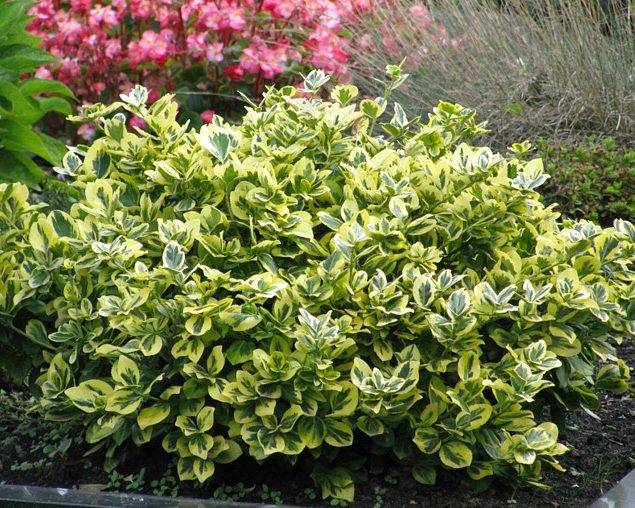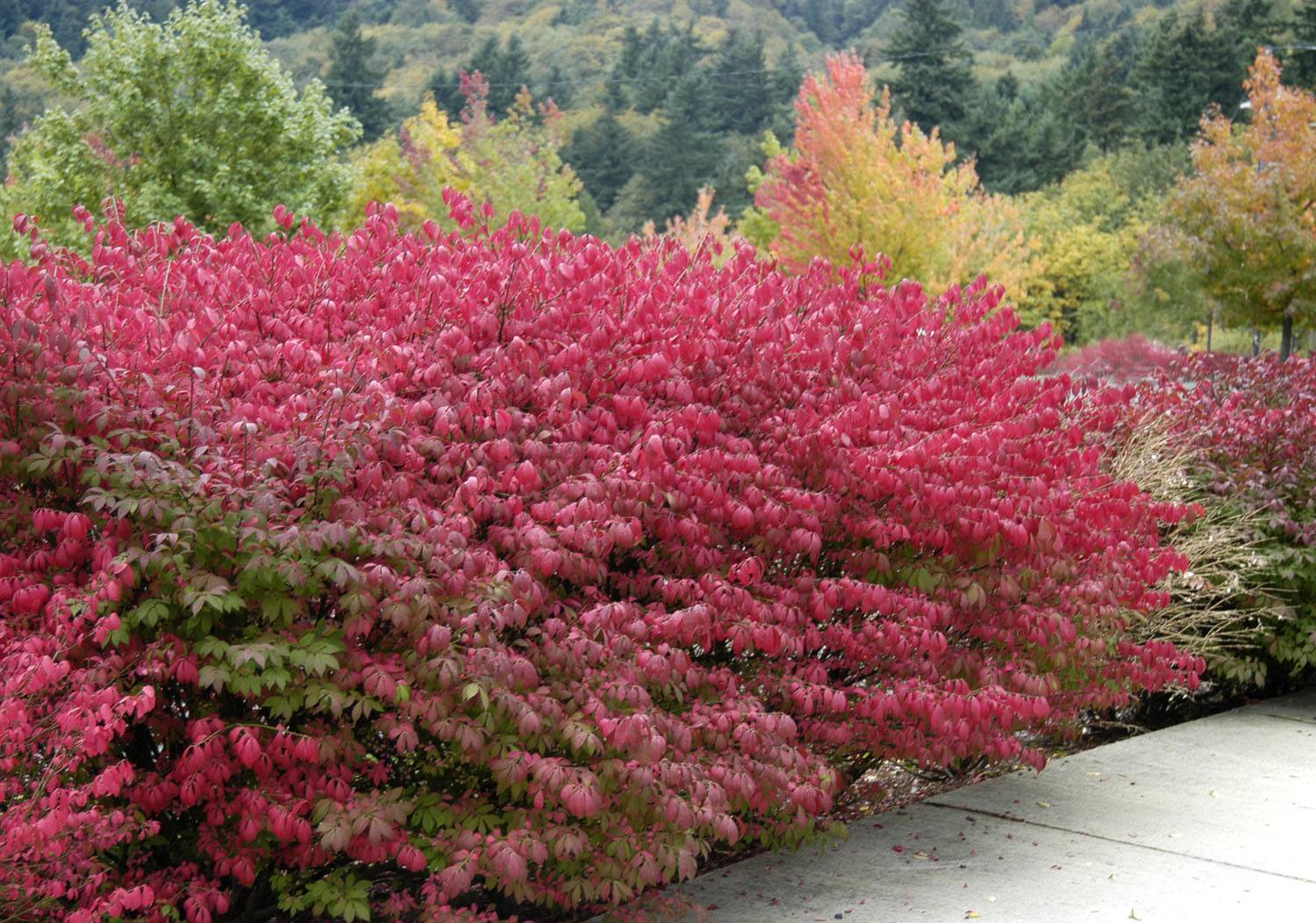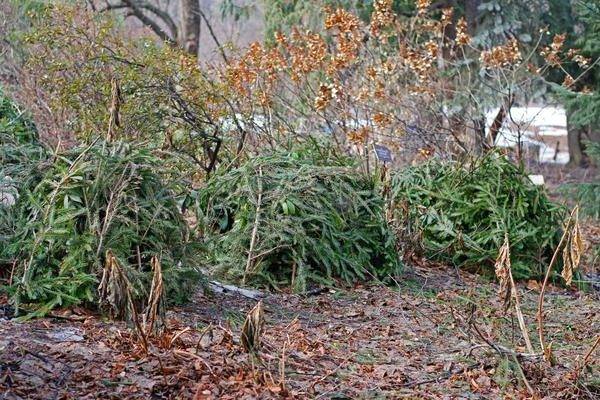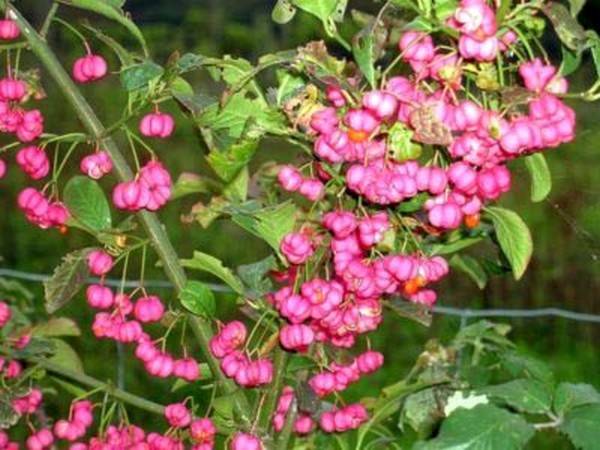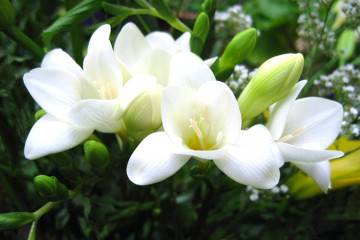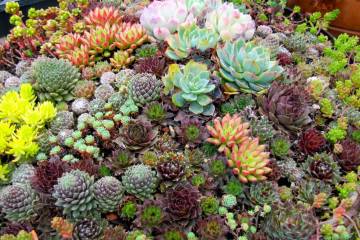Creeping euonymus - planting, care and cultivation in the garden
Content:
- What does a creeping euonymus look like, which family does it belong to?
- Description of popular varieties of creeping variegated euonymus, their advantages and disadvantages
- Features of care for creeping euonymus in the open field
- Features of winter care
- When and how it blooms
- Pruning
- How euonymus reproduces in the garden
- Possible problems when growing a creeping spindle tree
More than 200 different types of euonymus have been studied. According to the description of the euonymus plant, this shrub can be both evergreen and deciduous. Red euonymus, or creeping euonymus, belongs to the winter-hardy, therefore it has taken root well in the European part of Russia.
What does a creeping euonymus look like, which family does it belong to
Creeping euonymus belongs to the euonymus family (group Euonymus). The family includes tall and creeping shrubs. The shape and color of the leaves of different species differ from each other. The shrub retains decorativeness until the very frost.
Briefly about the history of appearance
In its natural environment, the culture grows in Asia, Europe, Australia, America, Madagascar, China. The scientific name is Euonymus which translates from Greek as "good, good" and όνομα - "name". So Euonymus is a plant with a “good name”.
Plant characteristics
Creeping euonymus is a ground cover plant. He can creep in a lush carpet. The height of the bushes does not exceed 35 cm. The stems are long, flexible. Their length reaches 1.5-1.8 m. Leaves are smooth, opposite. They are green and variegated. Flowers are small, pale. The fruit is a leathery, dry, four-part capsule.
Use in landscape design
Creeping euonymus is very often used in landscape design. Ground cover varieties are the best suited for creating rockeries and alpine slides. The variegated view of the creeping plant is beautiful in the form of cascades of alpine slides.
Description of popular varieties of creeping variegated euonymus, their advantages and disadvantages
The advantages of culture can be considered unpretentiousness, winter hardiness, colorfulness, ease of breeding, demand for landscape design.
The main disadvantages are the instability to diseases and pests, the toxicity of the berries.
The most popular creeping euonymus include Fortune, Fireball, Macrofilis, Compactus, Winged.
Compactus
Euonymus Compactus is a rather tall bush. The spherical crown grows up to 1.5 m in height and covers an area of about 2 square meters. It needs shaping, although it looks beautiful without cropping. In contrast to the densely branched middle, the uncut ends of the stems resemble an openwork veil.
The foliage is green all summer, with the approach of autumn it changes color to red-purple. The flowers are not particularly beautiful, but they attract attention, similar to the lobes of the stamens. They are bright red.Berries are then tied onto them, which, when fully ripe, become deep orange.
Winged
Winged Euonymus (Euonymus alatus). In the people, in the description of the winged spindle tree, the names "burning bush" or "burning bush" were fixed. Indeed, in the fall, the bush resembles a fireball.
The tall shrub consists of tough, erect branches. The dull green shoots show wing-like cork growths. This explains the name of the species. Winged grows slowly and reaches a size of 2x2 m.
Features of care for creeping euonymus in the open field
Garden euonymus grows well in open, sunny areas, but it also tolerates partial shade easily. It is important that the groundwater is deep. He prefers dry hills.
The plant does not need frequent watering. The only exception is a drying, prolonged drought. In creeping species, the root system is superficial, so it is recommended to water them abundantly 1-2 times a week. No watering is required in rainy weather.
Sprinkler irrigation is beneficial to the crop. Especially combined with foliar feeding. Such spraying is beneficial for young seedlings. They will help the shrub grow faster and increase immunity before hibernation.
Euonymus is an inhabitant of the subtropics. In nature, it grows on loose soil from rotted foliage. Light, organic-rich soil allows the plant to fully feed, provides sufficient aeration of the root system.
In a garden, the euonymus needs to be fed. The first top dressing is applied in the spring, following the formation of the crown. Nitrogen compounds are useful for growing green mass. In the summer season, complex compounds are required, including phosphorus, potassium, calcium. Before winter, the soil must be fertilized with superphosphate. Ripe compost and stove ash will also come in handy. It is recommended to use diluted manure infusion every second season.
Features of winter care
Some types of euonymus are winter-hardy, while others can suffer from the cold. As for creeping species, their roots are located close to the surface. In the snowless winters of central Russia, it is better to insulate them well. Any covering material will do. You can simply overlay it with spruce branches.
As for young plants, they need to be covered regardless of the species. At least mulch high or sprinkle with a layer of snow. How mulch can be used:
- fallen leaves;
- peat;
- humus.
When and how it blooms
The euonymus begins to bloom in the last days of May. The flowers are medium-sized, collected in loose inflorescences. The bud consists of a five-pointed sepal and five petals. A notable detail of the flower is the pistil-ovary, similar to a lobe.
The flowers of the culture are inconspicuous, small. There are creamy white narrow petals, pale green, lilac brown. They are collected in corymbose or racemose inflorescences.
Basically, the flower shape is similar to a cotton boll. Depending on the type of bud outline, there may be:
- similar to a sphere, with fused membranes;
- single row flat;
- with the tips of the petals curved outward.
Flowering culture is short-lived. The decorativeness of flowers is of no value. A couple of weeks after they bloom, fruits begin to set.
Pruning
The culture needs regular pruning.Spring is aimed at cleansing from damaged and substandard shoots. If necessary, this sanitary pruning can also be carried out in the summer. A shaping haircut is carried out after the fruit has ripened. It is made purely for decorative purposes to give the crown the desired shape. Formation is allowed in early spring (can be combined with sanitary pruning).
How euonymus reproduces in the garden
Before planting euonymus, you should study the methods of its reproduction. All classic options are suitable for this plant. The result of euonymus planting is excellent in all cases.
Germinating seeds
Mature seeds are suitable for sowing. They can be sown immediately after harvest. During the winter they will be hardened (they will undergo stratification). The nursery bed for the winter should be covered with coniferous spruce branches, dry grass.
For spring sowing, the harvested seeds must be stored in a cool place. Before planting, it is recommended to hold it in water for a couple of days.
Rooting cuttings
For grafting, young semi-lignified branches are needed. The apical stalk should have 4-5 buds. The bottom cut is made under the kidney. Before planting in fertile soil, it is useful to hold the planting material in a root growth stimulator ("Epin", "Kornevin"). A pot of cuttings is watered abundantly, placed in a plastic bag for a greenhouse effect, and exposed in a warm, dark place. When new leaves appear, the seedling can be planted in a permanent place.
Air layering
The easiest way. Especially for ground cover species. You just need to sprinkle with nutrient soil (humus, peat, leafy soil) branches with aerial roots. A rooted seedling is left next to the mother bush for a year.
Other options
The plant can also be bred by dividing the bush. In this case, you can not reach the entire root system, but only cut off part of the bush with the root with a sharp shovel. This method can be used only before sap flow (early spring).
Possible problems when growing a creeping spindle tree
Depending on the conditions of detention, different problems may appear. A decrease in the decorativeness of a culture depends on:
- illumination;
- humidity;
- pests;
- diseases.
Leaves turn pale
Excessive lighting leads to discoloration of the leaves. But with a lack of light, the foliage also changes color. Becomes dull, yellow. Especially the variegated creeping euonymus suffers.
The tips of the leaves dry
The tips of the leaves dry out in very dry air and high air temperatures. To avoid this, you need to spray the flower more often. If necessary, you can shade.
Note! Indoor flower euonymus often suffers after turning on heating devices. Taking care of the spindle tree at home should take this factor into account.
The lower leaves fall
Low (below 50%) humidity and high temperature lead to falling of euonymus foliage.
Pests
Euonymus is susceptible to attack by aphids, spider mites and other pests. For prevention purposes, chemical treatment ("Fufanon", "Inta-Vir") is required in early spring. When insects appear, the affected branches are removed and disposed of.
Other problems
Culture is often the focus of fungi. Of these, powdery mildew is the most common. To avoid infection, it is also better to take preventive measures, that is, after winter, treat with antifungal drugs (Fitoverm, Aktellik).
To grow euonymus or not, everyone decides for himself. Especially considering the toxicity of the fruit, whatever the variety. But, if you take the necessary measures, planting plants will delight from early spring until frost. Even in winter, beautiful fruits will adorn the bush. And growing euonymus and caring for it are available to every fan.

